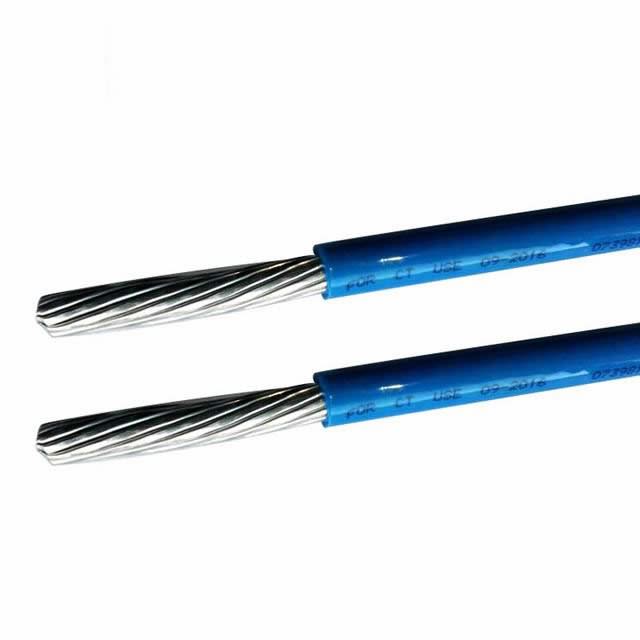

Similarities: Both RHH and RHW / RHW-2 cable hold a 600 V rating. The trade-off is that RHH cable does not possess the water resistance characteristic of RHW / RHW-2 cable. As mentioned above, the R stands for Rubber – but in this case the extra “H”, or HH in RHH, stands for High Heat resistance of 90° C. In the past, there was a plain USE, but it is now generally considered obsolete and replaced by USE-2. What does the “-2” stand for? It is a designation used for the 90° C temperature rating. USE-2 can be used as RHW-2 or RHH cable at temperatures up to 90☌ in wet or dry locations. USE-2 is a good choice for industrial applications where better insulation toughness and resistance to moisture and heat are desired. USE-2 cable can be used underground since it is able withstand pressure and is resistant to other elements such as sunlight (black only), oil and gas. USE-2 cable stands for Underground Service Entrance cable. RHW-2 – Having the same inherent qualities as RHW, the NEC lists RHW-2 as having the ability to withstand heats of up to 90° C. RHW-2 cable is suitable for direct burial in both wet or dry conditions. THWN is like THHN but able to handle more severe environments without additional insulation. It is acceptable to use RHW cables underground and in wet locations. Thermoplastic heat and water-resistant wire (THWN wire) is useful for both wet and dry applications and can withstand temperatures up to 167 degrees Fahrenheit, or 75 degrees Celsius. RHW cable can withstand heat up to 75° C, and is water resistant.


RHW – RHW cable is a wire insulated by rubber or XLPE as mentioned above. Even though the wire has a rubber outer layer and is acceptable for use in damp environments, the “W” designation is required for use in the presence of water and other liquids. The “W” means the cables can be submerged in water if needed. Possibly the most important factor when considering the environment of your wire. The thinner the XPLE insulation, the less resistant it is to heat. The insulation’s length and width determine its heat resistance. Even though the “R” stands for rubber, it also incorporates other neoprene insulations that XLPE falls under.Ĭables must be able to withstand the elements. Like XHHW and XHHW-2, RHW-2 wires are insulated by cross-linked polyethylene (XLPE). RHW and RHW-2Ī rubber outer layer that is very important when it comes to copper cables, especially when those cables are utilized in possible hazardous environments. This way consumers know exactly what type of wire they are using.
#THWN 2 WIRE CODE#
We broke down THHN and XHHW in that article, now let’s tackle RHW, RHW-2, USE-2 and RHH building wire.Īll electric wires and cables must be labeled appropriately by following the National Electric Code (NEC) guidelines. XHHW: What Is the Difference?, there are a lot of somewhat confusing abbreviations used on wires and cables.


 0 kommentar(er)
0 kommentar(er)
